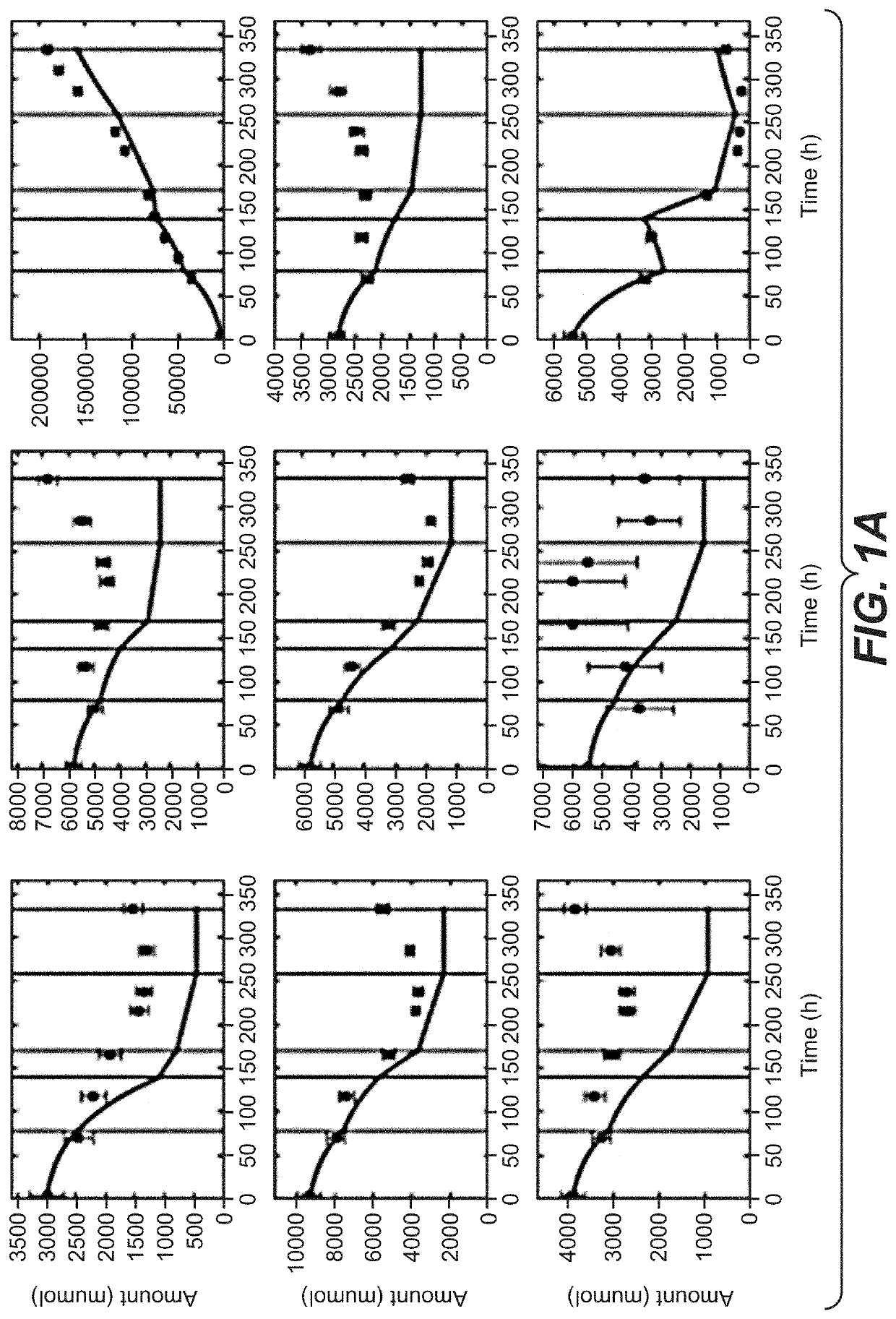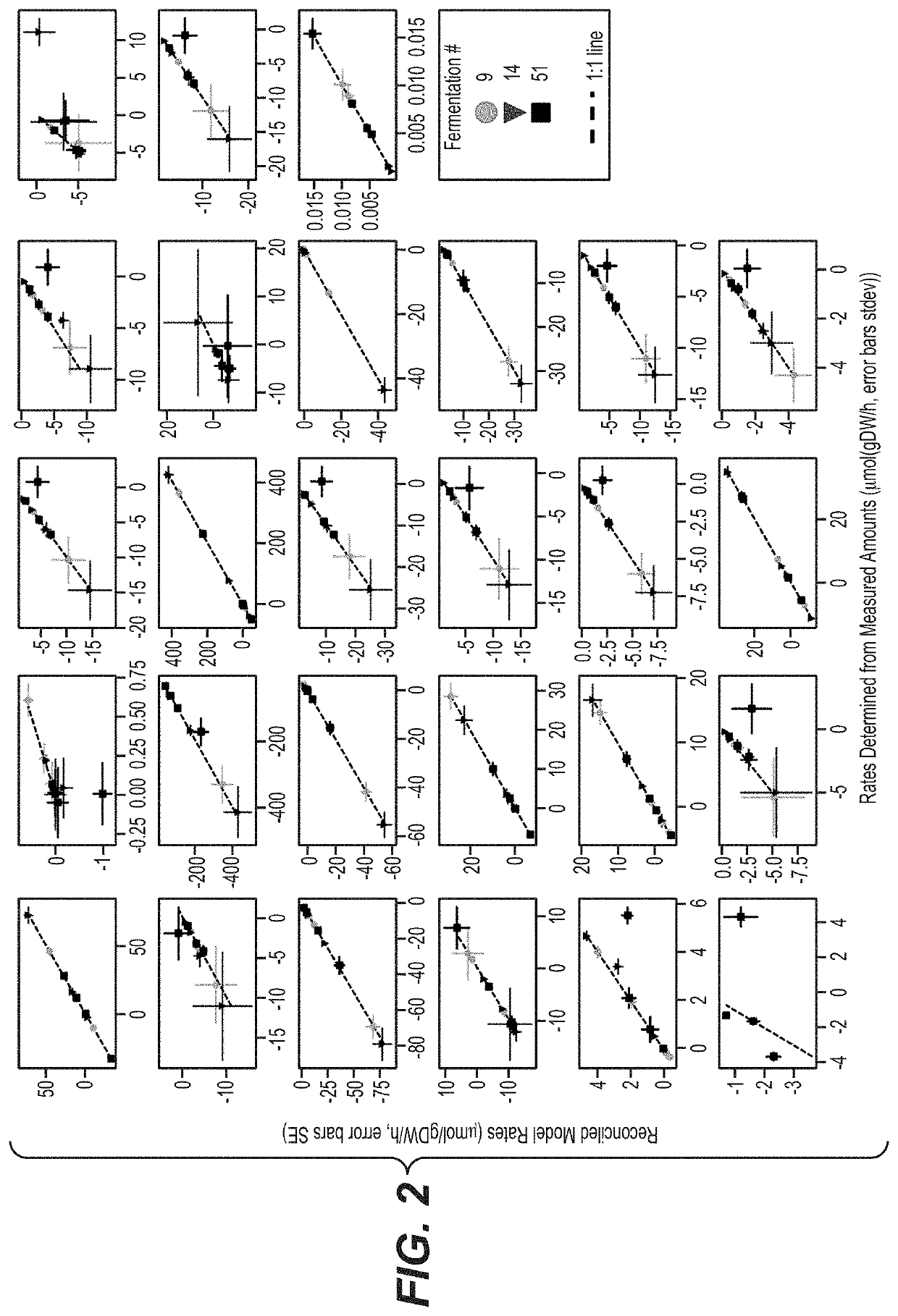Method for verifying cultivation device performance
- Summary
- Abstract
- Description
- Claims
- Application Information
AI Technical Summary
Benefits of technology
Problems solved by technology
Method used
Image
Examples
example 1
[0248]Comparison of Recombinant CHO Clones and Ranking by Metabolic Performance Indicators
[0249]For clone comparison experiments, ten recombinant CHO—K1 clones (CL4 to CL13) expressing the same monoclonal IgG4 antibody were used. For comparison studies of different products, a further clone CL14 expressing the same recombinant human IgG4 monoclonal antibody as described before and two other production clones (CL2 and CL3) expressing a monoclonal IgG1 antibody were used. The recombinant CHO—K1 clones were cultivated in a protein-free, chemically-defined proprietary medium for seed train and subsequent fed-batch experiments. Seed train cultivation was performed in shake flasks using a humidified incubator with set point controlled 7% CO2 and 37° C. The clones were split every three to four days. For all experiments, clones of identical age in culture (21 days) until start of the experiments were used. For the fed-batch clone comparison experiments CL4 to CL13 were cultivated in 230 mL...
example 2
[0251]Comparison of Different Fermentation Scales for Recombinant CHO Clone Cultivations
[0252]A metabolic flux analysis approach was applied for establishing an automated CHO cell performance analysis for high throughput use. To this end, a rich data set compromising cultivations conducted at various scales, expressing various monoclonal antibodies was utilized and curated, if required (see Table 3). Methods used to design the pipeline included genome-scale metabolic network modeling, identification of process phases, metabolic flux analysis, and analysis of clone performance indicators. Statistical analyses performed included reduced χ2 tests, cross-validation and replicate analyses. Results of the analyses enabled to resolve conversion and transformation errors in the data set, determine an acceptance window for the χ2 tests. Further, the impact of taking into account additional measurement parameters in the form of host cell protein and oxygen uptake measurements was analyzed.
[02...
example 3
[0254]CHO Clone Performance Analysis by OUR and HCP Measurement
[0255]The impact of including the additional measurements, to this end, subsets of cultivations representing the HCP and OUR data sets were analyzed (see Table 3). Here, it has been found that in both cases, taking into account the additional data improved the information content retrieved from the experiment by increasing the χ2. In detail, a significant increase in the information content of CHO fermentations were gained, when taking into account host cell protein (13% points increase) and oxygen uptake rate (25% points increase) measurements (see Table 9).
TABLE 9Detailed outcome of the χ2 test. For the analysis of the impact of the HCPand OUR measurement model scenario 1 (Model 1) was re-evaluatedusing only the cultivations in which HCP and OUR were measured.consistentnoand enoughlimiteddataeval-informa-infor-inconsis-uationcultivations scenariotionmationtentpossibleallModel 116%39%45%0%cultivationsModel 223%39%35%4%M...
PUM
 Login to View More
Login to View More Abstract
Description
Claims
Application Information
 Login to View More
Login to View More - R&D
- Intellectual Property
- Life Sciences
- Materials
- Tech Scout
- Unparalleled Data Quality
- Higher Quality Content
- 60% Fewer Hallucinations
Browse by: Latest US Patents, China's latest patents, Technical Efficacy Thesaurus, Application Domain, Technology Topic, Popular Technical Reports.
© 2025 PatSnap. All rights reserved.Legal|Privacy policy|Modern Slavery Act Transparency Statement|Sitemap|About US| Contact US: help@patsnap.com



